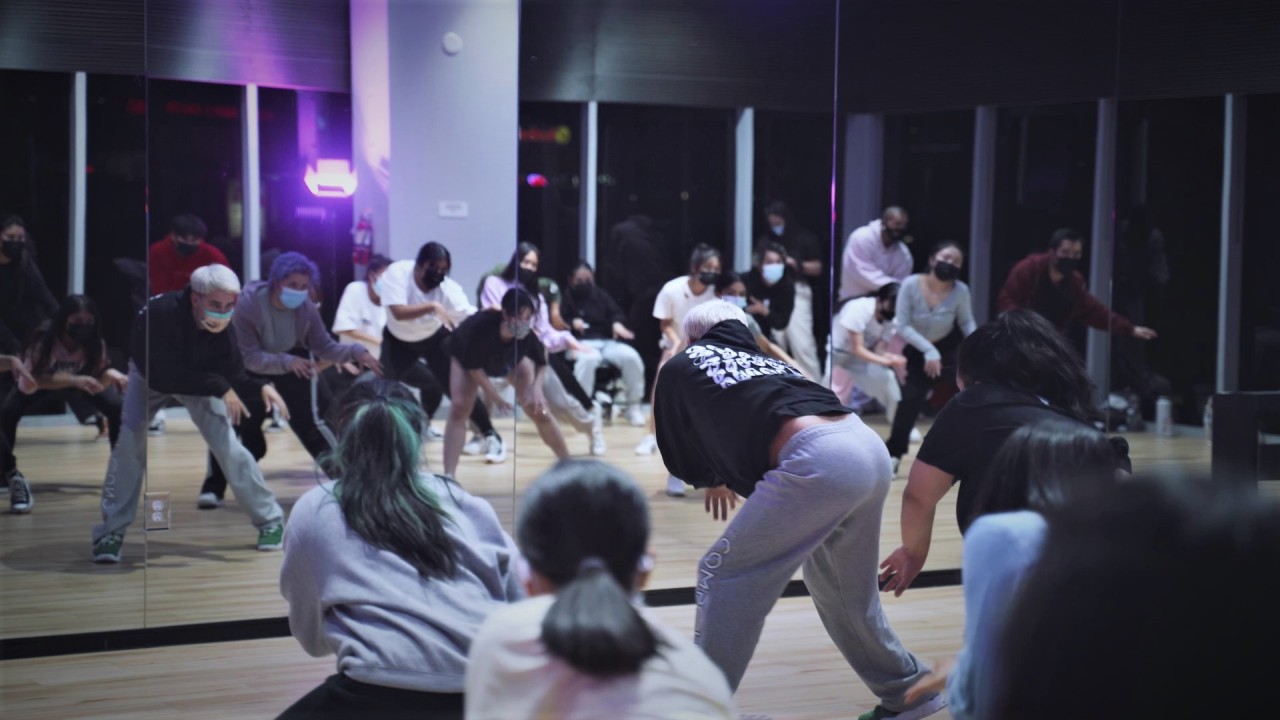 |
A group dance class takes place at the K-Pop Center in Buena Park, California, in early December. (Image captured from video in courtesy of K-Pop Center) |
Christina Opie, 21, says she spends over 10 hours every day at the K-Pop Center in Los Angeles, California, honing not just her vocals and dancing, but familiarizing herself with Korean music production, language and culture.
Opie is a part of the American K-pop institute’s 16-week audition preparation program, APP16, that runs specifically with the purpose of overcoming the high walls of South Korea’s entertainment agencies. According to Opie, she aspires to become an inspirational K-pop idol artist like Chungha.
“I found K-pop in a really difficult time of my life and it really cheered me up. And I always felt more comfortable expressing myself through art forms than in actual words, so it felt like there was no other option for me. This is what I need to be doing in my life,” Opie told The Korea Herald.
K-pop emerges into the US mainstream
Non-Koreans wanting to become a K-pop idol is not something new. Foreigners have flown to South Korea from years back, knocking on the doors of training academies, while agencies have held global auditions outside the country to uncover new talent.
While most of the search for foreign talent has happened mainly in Asian countries in the past, in recent years there are increasingly more attempts in Western countries, especially in the US, following the unprecedented success of groups there such as BTS and Blackpink.
According to the Korean Cultural Center Los Angeles, a government-operated body dedicated to introducing Korean culture to the local community, K-pop, once a niche genre enjoyed among certain ethnic communities, has now become a part of the mainstream.
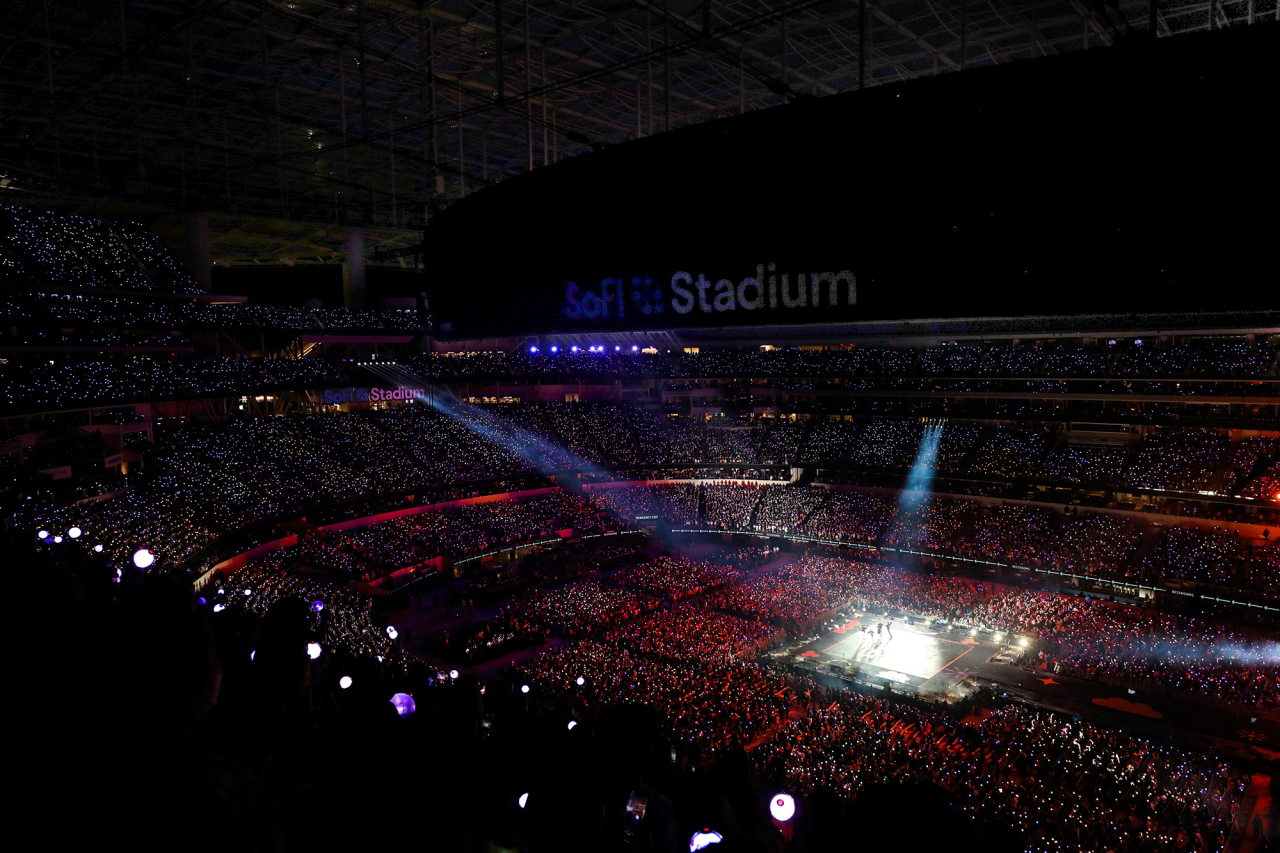 |
K-pop sensation BTS` "Permission to Dance On Stage" concert takes place at the SoFi Stadium in Inglewood, California, on Nov. 28, 2021. (BigHit Music) |
“In the early 2000s, K-pop first formed a teenage fandom within the Asian and Hispanic communities here after a bandwagon of K-pop acts, such as TVXQ, Super Junior and Girls’ Generation became popular in China and Southeast Asian countries. But with the advance of YouTube and other social media, K-pop spread through various channels, gaining popularity within mainstream society here, regardless of age and race,” an official from the cultural center said to The Korea Herald through email.
While KCCLA hosts a variety of K-pop programs for the locals, most of them have seen success, reflecting the hyped popularity of the genre. Among them, the K-pop academy has been taking place annually since 2016, except for 2019 when it was cancelled due to COVID-19. It saw the number of applicants increase continuously over the years to hit a peak of 283 last year.
Joyce Park, the chief operating officer of the K-Pop Center, said K-pop has seen its status elevated higher than ever in American society recently, mainly thanks to the phenomenal success of BTS.
“America is more accepting of K-pop right now. It‘s gotten more exposure, and there’s a lot more people accepting the fact (that K-pop idol can be a career here),” said Park, who has been in the industry for over 15 years. “BTS has definitely opened up a lot of doors here, so debuting here as an Asian or K-pop idol is not going to be an issue.”
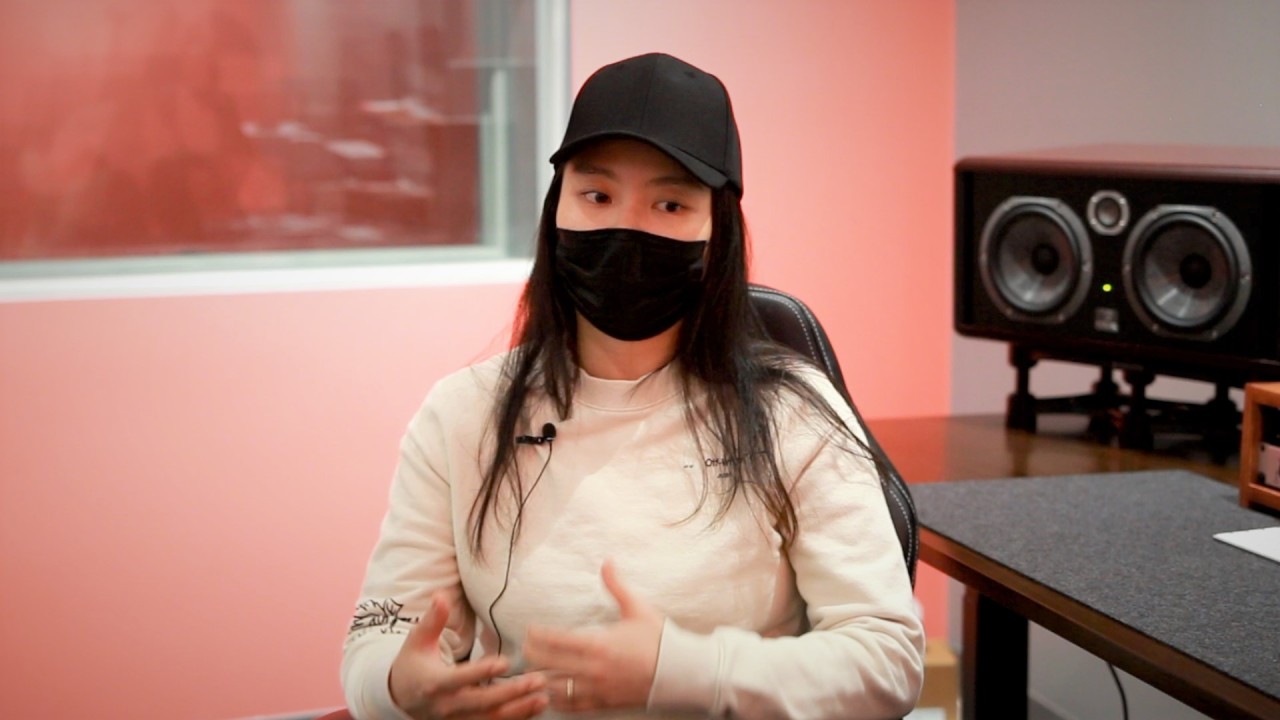 |
Joyce Park, the director and COO of K-Pop Center, speaks during the interview with The Korea Herald in early December 2021. (Picture by Choi Ji-won/ The Korea Herald) |
Export of the K-pop training system
While multi-national groups, such as Enhypen and Tomorrow X Together, have become a new norm for the rookies debuting in the recent years, some agencies have taken things a step further, announcing plans to debut K-pop groups outside of Korea.
Two of the biggest K-pop powerhouses, S.M. Entertainment and Hybe, are set to debut a boy band each through televised audition programs scheduled to air in the US this year. Hybe will team up with Universal Music Group’s affiliate Geffen Records, and S.M. with MGM Worldwide Television.
Brandon Jung, an LA-based music producer who has been working with Hybe and its artists, said the K-Pop Center was established to introduce the intense, organized training model that K-pop trainees in Korea go through. According to Jung, the program coordinator of APP16, the 16-week course not only prepares talent-wise, but gives them a glimpse into the trainee debut process.
“The program is like a mock audition, something similar to ‘Produce 101,’” Jung said, referring to Mnet’s popular idol debut survival show series.
“They have a song to master each for eight weeks, learning the choreography, singing, and even experiencing how things are done before a song gets released. They learn about the production, recording, mixing, mastering and even a bit of arranging, and I oversee that (production) part,” he said.
 |
Producer Brandon Jung, also in charge of the program coordination of APP16, speaks with The Korea Herald in his studio at the K-Pop Center. (Picture by Choi Ji-won/ The Korea Herald) |
According to Jung, APP16 is the first of such a demanding prep course like that of a Korean academy, and is something unheard of.
“There were K-pop auditions happening locally, but it wasn’t as organized (as it is in Korean academies). So, when agencies recruited talent, it was mostly people who just applied after seeing the (audition) ad, rather than those who were prepared properly,” Jung said. “There’s more demand for K-pop (training), but there wasn’t enough supply, so we’ve decided to do it ourselves.”
Opie, who had traveled to Seoul for four months in 2019 to do auditions at the Korean entertainment labels, said she prefers the lessons at the K-Pop Center compared to what she had experienced in a factory-like K-pop academy back in Korea.
“We never know what‘s going on truly behind those closed doors or the cameras. I think they’re working much harder with a lot less room for nurturing,” Opie said.
She added, “I think if you go to Korea, it‘s easy get swept away. Seeing how many younger and more talented, fluent in Korean candidates there are, it kind of brings you down. Like, ’Why would they choose me when they have all these other options?’”
“I think this one you feel more cared for. I feel more cared for. I feel like the instructors are actually checking on me. They‘ll ask about how you’re feeling. They’d give us advice. Whereas there (in Korea) it’s as if, ‘We give you the opportunity. You do what you can with it.’”
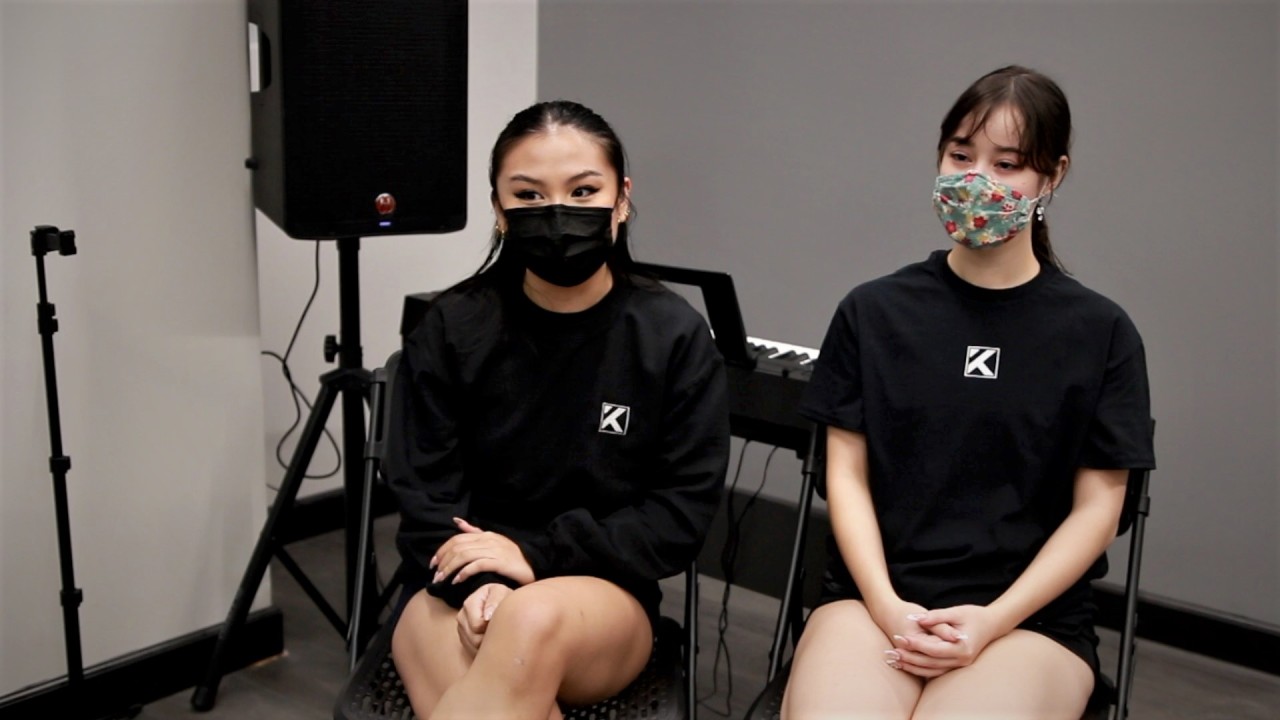 |
Christina Opie (right) and Jade de Perio talk about their experience training to become K-pop idols at the K-Pop Center. (Picture by Choi Ji-won/ The Korea Herald) |
Just like in the case of the big trainee academies in Seoul, which often interact closely with the labels, the K-Pop Center is also reaching out to companies to make more opportunities for its trainees.
The APP16 program includes private auditions with multiple K-pop labels, including D-nation, which former 2NE1 member Park Bom is contracted to. A private audition for Jellyfish took place in December, whereas JYP Entertainment and Hybe America are upcoming in February, the center’s COO Park said.
K-pop, a story that inspires, empowers
Extensive efforts put into training one’s vocal and dance skills are not everything to what makes being a K-pop idol so appealing to so many people around the world.
As referenced in the term “idol,” these artists are not just perfect performers, they are a representation of someone that others could look up to. They come with an inspirational story and relatable personality, which eventually turns fans‘ relationships with their idols into something personal.
Lando Lee Wilkins, a dancer and choreographer who has worked with numerous global K-pop stars, including BTS, Jay Park and Monsta X, says shaping a personality is one of the elements that instructors have in mind while coaching the trainees at the center.
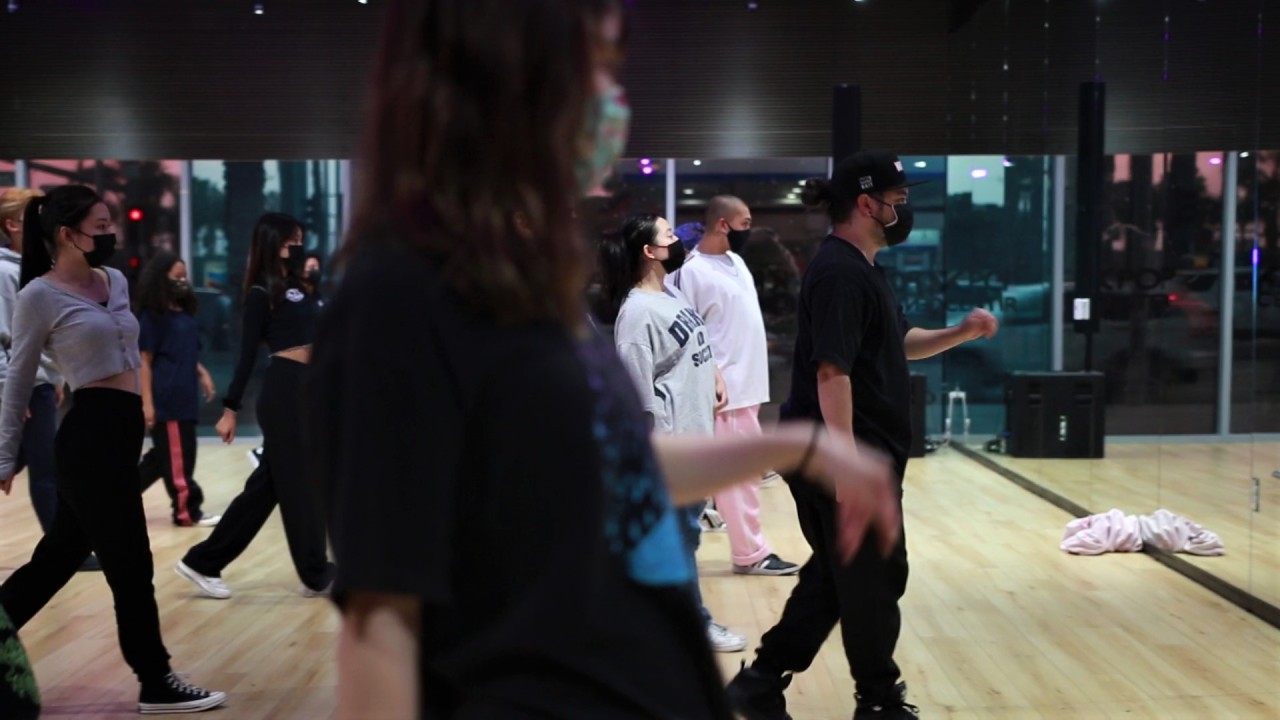 |
Lando Lee Wilkins (very right), a veteran dancer and choreographer, teaches students during a group dance class at the K-Pop Center. (Picture by Choi Ji-won/ The Korea Herald) |
“The extra step that I would give them that‘s lacking is the personality and mentality of the K-pop industry and music. The intensity is not the same (here in the US) compared to how they start in the K-pop industry. It’s so young (there in South Korea) that they become maybe idols when they’re in their late or early teens and twenties, as opposed to here, you don’t have to learn all these things to be a personality,” Wilkins said.
Rammus Lo, an 18-year-old Chinese American currently attending the University of California in Los Angeles, also picked his favorite K-pop artist as NCT’s Taeyong for similar reasons.
“I don’t stan any group, but I think the group NCT is really good. Their dances are on point and they‘re really good at singing. I particularly like Taeyong and his story because I heard he was the worst trainee dance-wise. But he’s now the best dancer,” Lo said.
Jade de Perio, who was taking the APP16 course while working at her full-time job, also agreed that the inspirational spirit of K-pop artists is what had captivated her in the first place, and what drives her through a stringent schedule.
“Hearing their stories and what they‘ve gone through to get there, and what they represent has meant so much to me. It gave me so much courage to be able to pursue my passions and it reminded me that I can also sing, dance and perform,” the 22-year-old K-pop trainee-to-be said.
 |
Rammus Lo, a student of K-Pop Center in Buena Park, California, takes a group dance class. (Picture by Choi Ji-won/ The Korea Herald) |
De Perio added, “When you look at K-pop idols, they’re giving us content constantly, they‘re giving us more music and they’re able to connect with fans in a way that is really genuine. And people look for courage and hope in those connections, I think. I think that‘s where K- pop is different than other genres. They’re making that effort to connect with fans more frequently.“
Nodding fervently to De Perio’s words, Opie added, “I grew up listening to American artists because I grew up here and it was more so that I enjoyed what they made, but I didn‘t really feel a connection to the artist as much as with K-pop, where they make so much of an effort to always connect with their fans that it’s like, ‘Oh, I matter?’”
The future of K-pop in the USOther than the two boy bands set to launch under Hybe and S.M., CJ ENM also announced it will bring its audition program to Latin America, joining forces with HBO Max and Endemol Shine Boomdog, to launch a K-pop style boy band there. In November, Hybe America and Geffen kicked off their audition process for a US-based female pop group, whose members will be trained under the K-pop training system in Los Angeles, where they will eventually debut.
“I think we’re at the starting point of a series of changes to come, and Hybe (or the likes) is the frontrunner. They realize that this is what the public wants. With more and more rookies flooding out of Korea, we expect there will be a group that will have their breakout in the global market, and hopefully, our center could play a role there,” Jung said.
How exactly the expectations put on the K-pop idols will change in the coming years is something that even these experts with over a decade of experience in the industry cannot predict. According to Wilkins, past years have proven that K-pop takes a competitive stance in the global music scene hustle.
“It (K-pop) doesn’t have any big dips, as opposed to in the US, where the music is always changing so much that the artist may not be able to connect. But when they provide their motion in the K-pop industry, people can connect and relate to it more.”
By Choi Ji-won (
jwc@heraldcorp.com)













![[Today’s K-pop] Blackpink’s Jennie, Lisa invited to Coachella as solo acts](http://res.heraldm.com/phpwas/restmb_idxmake.php?idx=644&simg=/content/image/2024/11/21/20241121050099_0.jpg)
